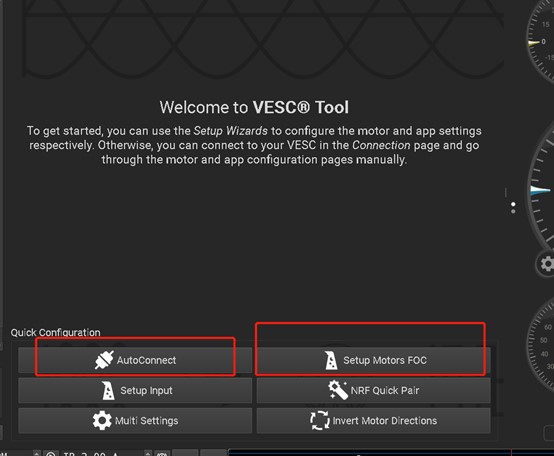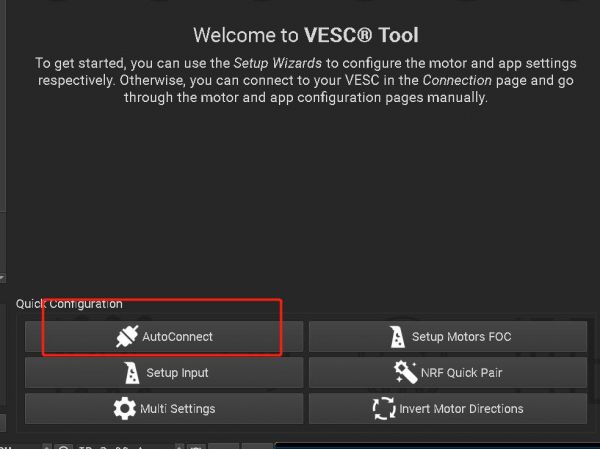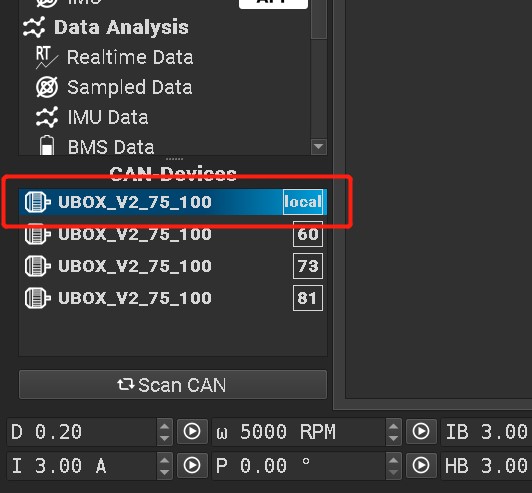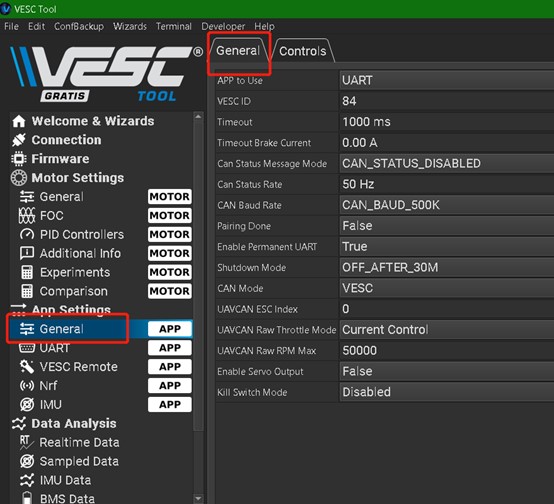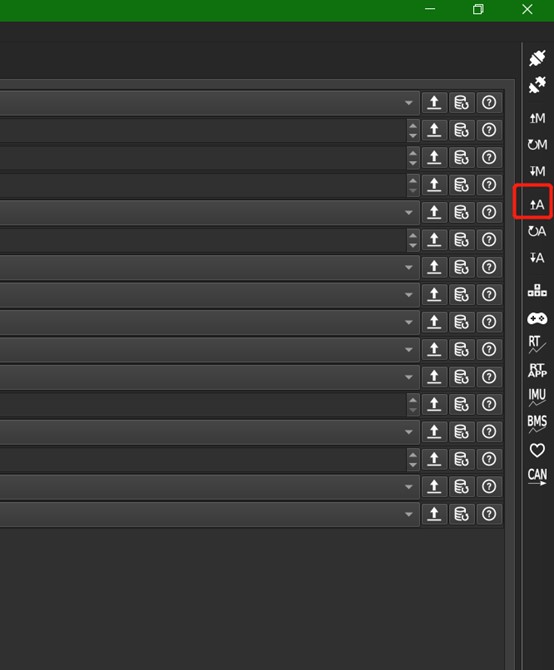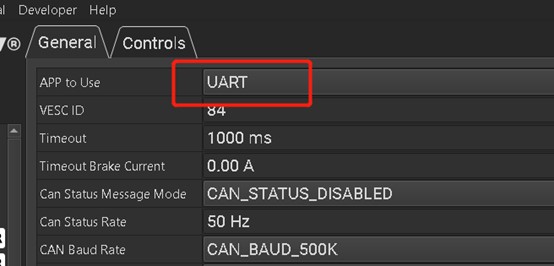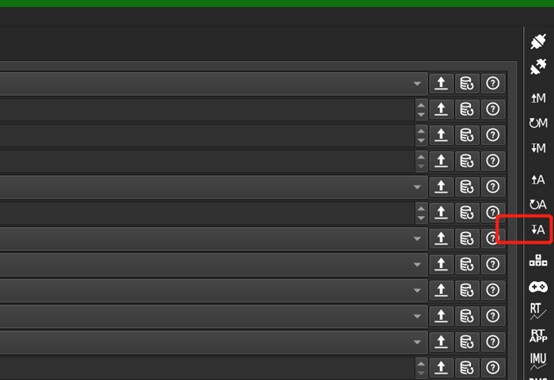Difference between revisions of "How to setup a 4WD with Ubox V2"
| (21 intermediate revisions by the same user not shown) | |||
| Line 1: | Line 1: | ||
[[Category:How to...]] | |||
This is a guide to help our users to setup a 4WD with two Ubox V2. Compared with Ubox V1, V2 is specially designed for 4WD, it supports CAN plug-in power ON, and disable-receiver, these two features are very helpful for the build of 4WD. | This is a guide to help our users to setup a 4WD with two Ubox V2. Compared with Ubox V1, V2 is specially designed for 4WD, it supports CAN plug-in power ON, and disable-receiver, these two features are very helpful for the build of 4WD. | ||
==Conception== | ==Conception== | ||
To combine 2 Uboxes to build a 4WD, we need to set one of them as master, the other to slave. The master Ubox receives the remote’s control signal, relay the | To combine 2 Uboxes to build a 4WD, we need to set one of them as master, the other to slave. The master Ubox receives the remote’s control signal, relay the signal to all the other ESCs through CAN bus. In this article, we begin with Uremote V2, for the third party remote, they are same. | ||
So, | |||
So, let's set the master/slave Uboxes first. | |||
==Prepares== | ==Prepares== | ||
* VESC tool V3.01 PC edition and [[Notes of VESC FW 5.03|VESC firmware 5.03]] in ESCs. | |||
* Two Uboxes | * Two Uboxes | ||
* An Uremote. | * An Uremote. | ||
| Line 13: | Line 16: | ||
* 4 motors | * 4 motors | ||
* A Power button and cable, included with Ubox. | * A Power button and cable, included with Ubox. | ||
[piture needed] | |||
==Step by step== | ==Step by step== | ||
| Line 18: | Line 22: | ||
# power off ubox and Uremote. | # power off ubox and Uremote. | ||
# Do not power on remote, then power on Ubox | # Do not power on remote, then power on Ubox | ||
# After button led is solid green, click button 9 times, then wait 1 second. | # After button led is solid green, click button '''9 times''', then wait 1 second. | ||
# Power off Ubox, then click button to re-power on Ubox, check if the button led is no blinking when power on. If blinking, Go to step 1, and try again. Blinking is mean receiver is enabled. | # Power off Ubox, then click button to re-power on Ubox, check if the button led is no blinking when power on. If blinking, Go to step 1, and try again. Blinking is mean receiver is enabled. | ||
# Check the CAN LED inside the Ubox panel, if no light, go to 1, 2, in step 3, click button 6 times instead. | # Check the CAN LED inside the Ubox panel, if no light, go to 1, 2, in step 3, click button 6 times instead. | ||
| Line 39: | Line 43: | ||
#Click button 1second to power on, and hold button 3 seconds to power off. | #Click button 1second to power on, and hold button 3 seconds to power off. | ||
#If power ON/OFF not work, go to step 1, check if all the cables are in its correct socket, and try again. | #If power ON/OFF not work, go to step 1, check if all the cables are in its correct socket, and try again. | ||
#Connect to VESC tool, scan CAN device, to check if all 4 ESCs are displayed on VESC tool (Refer to below pictures: '''Setup remote control'''). If not, back to step 1 (set slave Ubox), check CAN cable and CAN enable configuration, try again. | |||
===Setup motors FOC=== | ===Setup motors FOC=== | ||
| Line 46: | Line 51: | ||
===Setup remote control=== | ===Setup remote control=== | ||
In VESC tool, AutoConnect. | |||
[[image:auto connect.jpg|600px|left]] | [[image:auto connect.jpg|600px|left]] | ||
<br style="clear:both;"> | <br style="clear:both;"> | ||
In the VESC tool window, low-left corner, select Local ESC. | |||
[[image:select local esc in can list.jpg|600px|left]] | [[image:select local esc in can list.jpg|600px|left]] | ||
<br style="clear:both;"> | <br style="clear:both;"> | ||
Go to APP settings->General->Gerneral</br> | |||
[[image:App settings general general.jpg|600px|left]] | [[image:App settings general general.jpg|600px|left]] | ||
<br style="clear:both;"> | <br style="clear:both;"> | ||
Read out APP settings</br> | |||
[[image:Read out app settings.jpg|600px|left]] | [[image:Read out app settings.jpg|600px|left]] | ||
<br style="clear:both;"> | <br style="clear:both;"> | ||
Set APP to Use UART</br> | |||
[[image:Set app to use uart.jpg|600px|left]] | [[image:Set app to use uart corrected.jpg|600px|left]] | ||
<br style="clear:both;"> | <br style="clear:both;"> | ||
Write back to ESC</br> | |||
[[image:write app settings back to esc.jpg|600px|left]] | [[image:write app settings back to esc.jpg|600px|left]] | ||
<br style="clear:both;"> | <br style="clear:both;"> | ||
Then, set VESC remote->General->Control type as current mode or the other mode you wanted, and write back to ESC. | |||
[[image:app settings vesc remote general current.jpg|600px|left]] | [[image:app settings vesc remote general current.jpg|600px|left]] | ||
<br style="clear:both;"> | <br style="clear:both;"> | ||
| Line 70: | Line 77: | ||
Now finished, push the remote’s gear to test if all 4 motors are spinning. | Now finished, push the remote’s gear to test if all 4 motors are spinning. | ||
'''Be careful of click buttons on right side bar, read out setting first, make settings, then write back to ESC.''' If occasionally, you reset them to default, we recommend that you repeat FOC setup and subsequent steps, because during FOC setup, the VESC tool will automatically bind them to CAN bus combined mode, this is convenient. Otherwise, we need to config them manually, that is a little | '''Be careful of click buttons on right side bar, read out setting first, make settings, then write back to ESC.''' If occasionally, you reset them to default, we recommend that you repeat FOC setup and subsequent steps, because during FOC setup, the VESC tool will automatically bind them to CAN bus combined mode, this is convenient. Otherwise, we need to config them manually, that is a little troublesome. | ||
===Lights and horn=== | ===Lights and horn=== | ||
Plug in front light, brake light, and horn, | Plug in front light, brake light, and horn, into their respective sockets. Test them on the remote. If one of these devices not working, you can do a crossing check first. For example, if the front light is working, use it to check the rest socket to test if the sockets are functioning. | ||
==Concludes and | In 4WD configuration, the slave Ubox's light and horn socket is not functioning now, you can use the 12V and GND as DC source. | ||
==Concludes and explains== | |||
==Limits and cautions== | ==Limits and cautions== | ||
#Since our solution is based on open source VESC, users should fully understand the risks of open source projects. This article only describes the possibility of this build method, and is not responsible for the damage and accidents caused by users themselves. | #Since our solution is based on open source VESC, users should fully understand the risks of open source projects. This article only describes the possibility of this build method, and is not responsible for the damage and accidents caused by users themselves. | ||
== See also == | |||
[[Main Page]]</br> | |||
[[How to setup a 4WD with Ubox V1]]</br> | |||
[[How to build a 2/4WD switch-able board with ubox v2]]</br> | |||
==Notes== | ==Notes== | ||
Latest revision as of 22:17, 8 February 2022
This is a guide to help our users to setup a 4WD with two Ubox V2. Compared with Ubox V1, V2 is specially designed for 4WD, it supports CAN plug-in power ON, and disable-receiver, these two features are very helpful for the build of 4WD.
Conception
To combine 2 Uboxes to build a 4WD, we need to set one of them as master, the other to slave. The master Ubox receives the remote’s control signal, relay the signal to all the other ESCs through CAN bus. In this article, we begin with Uremote V2, for the third party remote, they are same.
So, let's set the master/slave Uboxes first.
Prepares
- VESC tool V3.01 PC edition and VESC firmware 5.03 in ESCs.
- Two Uboxes
- An Uremote.
- A 'Y' power cable to distribute battery power to two Uboxes.
- A 4PIN CAN cable,
- An USB typeC cable.
- 4 motors
- A Power button and cable, included with Ubox.
[piture needed]
Step by step
Choose one of 2 uboxes as slave,disable its internal receiver, enable its internal CAN bus
- power off ubox and Uremote.
- Do not power on remote, then power on Ubox
- After button led is solid green, click button 9 times, then wait 1 second.
- Power off Ubox, then click button to re-power on Ubox, check if the button led is no blinking when power on. If blinking, Go to step 1, and try again. Blinking is mean receiver is enabled.
- Check the CAN LED inside the Ubox panel, if no light, go to 1, 2, in step 3, click button 6 times instead.
Now the slave Ubox’s receiver is disabled, and its internal CAN is ON.
Set the other Ubox as master, enable its internal receiver and CAN bus, binding with Uremote
- power off ubox and Uremote.
- Do not power on remote, then power on Ubox.
- After button led is solid green, click button 8 times, then wait 1 second.
- Power off Ubox, then click button to re-power on Ubox, check if the button led is no blinking when power on. If not blinking, go to step 1 and try again. Blinking is mean receiver is enabled.
- Power off Ubox, then Power on Uremote, go into setting menu->Receiver Config->Binding->Enter. Then power on Ubox, the binding will succeed.
- Go into remote's setting menu->Ports Config->UART. Set to ‘UART To A’.
- On the remote, go into setting menu->Ports Config->CAN Bus. Set to 'ON'.
Now the master Ubox’s receiver is enabled, and its internal CAN is ON.
Combine with CAN cable
- Use Y power cable to plug in 2 Uboxes,
- Then plug in the CAN cable into master Ubox’s CAN-out and slave Ubox’s CAN-in.
- Plug in power button into master Ubox’s ‘BUTTON’ socket.
- Click button 1second to power on, and hold button 3 seconds to power off.
- If power ON/OFF not work, go to step 1, check if all the cables are in its correct socket, and try again.
- Connect to VESC tool, scan CAN device, to check if all 4 ESCs are displayed on VESC tool (Refer to below pictures: Setup remote control). If not, back to step 1 (set slave Ubox), check CAN cable and CAN enable configuration, try again.
Setup motors FOC
Connect in all 4 motors, plug the USB cable into the ESCA of master ubox, open VESC tool, do ‘Setup motors FOC':
Setup remote control
In VESC tool, AutoConnect.
In the VESC tool window, low-left corner, select Local ESC.
Go to APP settings->General->Gerneral
Read out APP settings
Set APP to Use UART
Write back to ESC
Then, set VESC remote->General->Control type as current mode or the other mode you wanted, and write back to ESC.
Now finished, push the remote’s gear to test if all 4 motors are spinning.
Be careful of click buttons on right side bar, read out setting first, make settings, then write back to ESC. If occasionally, you reset them to default, we recommend that you repeat FOC setup and subsequent steps, because during FOC setup, the VESC tool will automatically bind them to CAN bus combined mode, this is convenient. Otherwise, we need to config them manually, that is a little troublesome.
Lights and horn
Plug in front light, brake light, and horn, into their respective sockets. Test them on the remote. If one of these devices not working, you can do a crossing check first. For example, if the front light is working, use it to check the rest socket to test if the sockets are functioning.
In 4WD configuration, the slave Ubox's light and horn socket is not functioning now, you can use the 12V and GND as DC source.
Concludes and explains
Limits and cautions
- Since our solution is based on open source VESC, users should fully understand the risks of open source projects. This article only describes the possibility of this build method, and is not responsible for the damage and accidents caused by users themselves.
See also
Main Page
How to setup a 4WD with Ubox V1
How to build a 2/4WD switch-able board with ubox v2
